Movie Review – Millennium Trilogy, The: The Girl Who Kicked The Hornet’s Nest
Uneven, often slow, yet still eminently watchable, the final chapter in the Millennium Trilogy plays out with almost constructed style, and although once more I lament the lack of pairing of the two key leads on screen until the very end, this is a satisfying, if altogether unfinished, conclusion to the saga. Those who enjoyed the previous two films will find a lot to enjoy – and a lot to be frustrated at – with this grand finale.
– Summary –
Director : Daniel Alfredson
Year Of Release : 2009
Principal Cast : Noomi Rapace, Michael Nyqvist, Per Oscarsson, Lena Endre, Annika Hallin, Georgi Staykov, Niklas Hjulström, Hans Alfredson, Micke Sprietz), and Anders Ahlbom.
Approx Running Time : 147 Minutes
Synopsis: Lisbeth Salander is still in hospital following the events of her encounter with her estranged father, and with the police trying to press charges of attempted murder, a secret agency seeks to have both Lisbeth, and the wounded Alexander Zalchenko silenced for good. Blomkvist, who leads the charge of people believing Lisbeth to be innocent, starts to use his connections to dig a little deeper into Lisbeth’s past, in order to find a way to prevent her returning to jail and allowing those responsible to get away with it.
What we think : Uneven, often slow, yet still eminently watchable, the final chapter in the Millennium Trilogy plays out with almost constructed style, and although once more I lament the lack of pairing of the two key leads on screen until the very end, this is a satisfying, if altogether unfinished, conclusion to the saga. Those who enjoyed the previous two films will find a lot to enjoy – and a lot to be frustrated at – with this grand finale.
**********************
I begin this review with a reminder of the (unofficial) rules of a trilogy, as set out in Wes Craven’s Scream franchise: 1, the killer seems superhuman. 2, anyone, including the main character, can die. 3, Forget what you know about the past, because it’s coming back to bite you on the ass. And 4, all bets are off. I reiterate these rules, because the third and concluding chapter in the Swedish crime thriller trilogy follows all but one of them. The Girl Who Kicked The Hornet’s Nest brings to a close the cinematic adventures (at least in Sweden) of Lisbeth Salander and Mikael Blomkvist, the two protagonists of Stieg Larsson, whose sad passing in 2004 prevents us from continuing to follow their adventures. As it stands, the Millennium Trilogy is a wonderful epic of thrills and subterfuge, of horrible violence and eventual vindication; and for those of you wishing to really get into the meat of this saga, I suggest watching all three films reasonably close together. Much like Matt Damon’s Bourne trilogy, the three Girl films all tie together not only through their casts (of the which the majority appear in all three films) but the surreptitious links from the first one which eventually come to bear on the third – it’s a sense of linking them that makes this a series worth watching. It’s essentially not three individual films, as such, it’s one complete story told over three films.
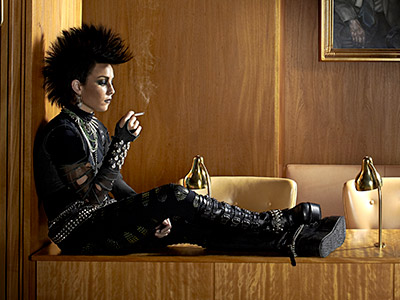
Lisbeth Salander (Noomi Rapace) is taken to hospital following the attack on her estranged criminal father, Zalander (Georgi Staykov) and her half-brother Ronald Neidermann (Micke Sprietz) at their farm. Due to the information Zalander possesses, and his link with Lisbeth, a secret organization called The Section (labelled as such by a female agency operative) decides to dispose of both the man and his daughter. After a particularly brutal attack in the hospital, Lisbeth is placed under police guard while she recuperates. The police want to charge Lisbeth with the attempted murder of her father, and Millennium editor Mikael Blomkvist (Michael Nyqvist) sets about trying to prove that she was only acting in self-defense. Meanwhile, Lisbeth’s former psychiatrist, the evil Dr Teleborian (Anders Ahlbom), under the guise of trying to help, seeks to have Lisbeth returned to his custody (where she was sexually abused as a girl for two years) due to his links with the Section. As her day in court nears, the Section begins to heighten their attempts to bury this story, including threatening Millennium staff, and Blomkvist must try desperately to provide enough evidence to have the charges against Lisbeth dropped.
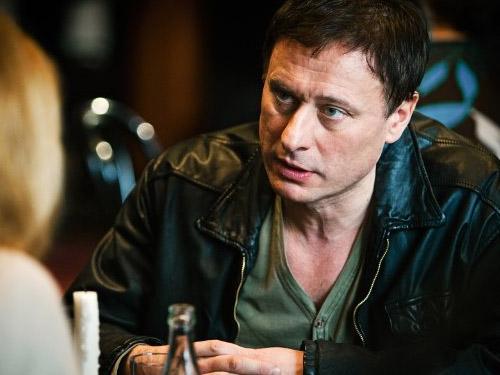
I mentioned the rules of a trilogy in my opening statement, because folks need reminding of what makes a good trilogy work. A good trilogy, especially if it’s set up as one in the first place, has a narrative interwoven through its individual parts that provides some measure of collective, a way for folks to appreciate that the three films are all part of the same world – in a genuine way you don’t get in films like The Police Academy, for example. The advantage to Larsson’s trilogy is that he put a lot of story into each one that wouldn’t necessarily be acted upon until a further adventure; sowing the seeds, as it were. The rape of Lisbeth, brutally conveyed in the original film, seemed to just become an event with no outcome (at least, to me it did, since it wasn’t mentioned again in the original film after it happened), however, the eventual death of the rapist in the second film provided me with enough understanding that this event was going to become part of a larger picture – a picture we couldn’t see yet. There are a number of subplots throughout the trilogy like this, and I made mention of it in my review of The Girl Who Played With Fire. Lisbeth’s father, for example, the crime kingpin of film 2, reprises his role (albeit in a very short-lived manner) in this entry, concluding Lisbeth’s ties to him, and yet remaining a specter over her life until the final credits. Her half brother, Ronald, plays a key role in this film later in the story, and it’s good to see that the loose ends were tied up nicely by the time the film fades to black.

This film, much like the first sequel, has a single major issue working against it – the two protagonists in Lisbeth and Blomkvist spend almost no time on screen together, instead remaining apart for the entire duration of the movie… at least, until the very end. I understand that this follows the way Larsson wrote his novels, but the dynamic nature of their chemistry together, which worked so well in the original film, is undermined in the sequel and this film by keeping them apart. The narrative, however, doesn’t really allow them to spend much time together – she’s in hospital and then in prison, while he’s being chased by Section henchmen – so I guess it’s a lamentation of mine that will go unresolved. For the most part, however, The Girl Who Kicked The Hornet’s Nest does exactly as the title might suggest – Lisbeth is a real bee in the bonnet of some pretty powerful people, if you’ll pardon the mixing up of my Apis with my Vespii, and this time it’s less about the characters and more about the intrigue which drives this film. As a resolution of the story, the key players move into position and the story ratchets up with tension.
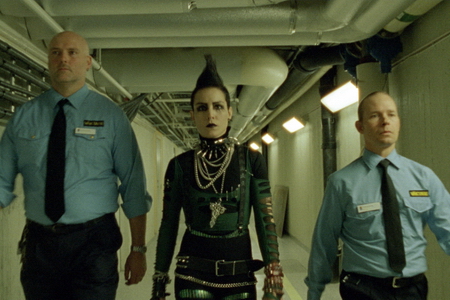
Once more, director Daniel Alfredson saddles up, and gives us a slowly paced yet utterly captivating third installment of this franchise. He continues the visual style from the sequel over into this film, with much of the same visual identity scattered throughout the narrative – scenes with Lisbeth are near-monotone, almost always shrouded in shadow or melancholy, as if reflecting somehow the fractured emotional state of our heroine. In contrast, the scenes with Blomkvist are more naturally lit, with a warm Earth tone accompanying his presence on screen. It’s a subtle nuance to the visual style of the film, and I think it works well. Alfredson’s use of framing is excellent, using some great camera angles throughout, and this also applies to the editing – here done by Mattias Morheden. The way this film cut together is stylish and calm, although I think a few minutes could have been trimmed here and there to keep the pacing more fluid and the film a lot shorter. The narrative can’t quite sustain such a lengthy film, although the sheer number of subplots going on here would predicate a bulkier runtime – some of the ancillary characters, for example, get a greater time on screen than perhaps was needed, and I felt that had the filmmakers decided to go for brevity over bulk, this film, and perhaps the sequel as well, would have become leaner, meaner entities as a result. Still, I can’t criticize this creative decision as much as it is a directive of the original novel, I’d wager.The other small issue I have is with the final scene in the film, which contains an unresolved farewell between the two leads: they’ve spent the best part of two films apart, and their final moment together is so greatly underwhelming (not that I expected a fanfare or flag waving) it’s a shame the series had to end on such a downbeat note. The conclusion of the film plays out as you might expect, with the Bad Guys getting their just deserts, but the emotional resolution never quite pays off. This is a disappointment.
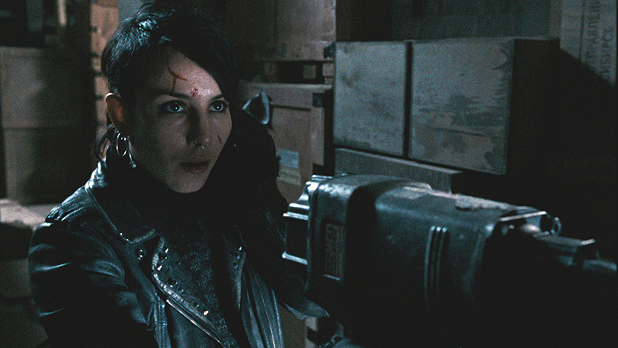
The cast, led by Nyqvist and Rapace once more, do a top job delivering the roles required – Rapace spends a great deal of time stuck in hospital, so her character arc is little more than sitting about going nowhere, and for some reason Blomkvist decides to start acting like an idiot midway through this film, seemingly unable to recognize the danger both he and his magazine’s staff are in; personally, I think the best performance in this film isn’t the two leads, but actually one of the chief villains. Anders Ahlbom, playing the role of the vile psychiatrist, Dr Palmgren, delivers a truly remarkably hateful performance here, and of all those on-screen in this film, he is by far the most effective. He’s this film’s equivalent of the original’s Nils Bjerman, the role of a completely horrendous person, vile and without humanity, and Ahlbom is truly great in the part. And Lena Endre, who plays Blomkvist’s fellow editor Erika at Millennium, is given an even larger role in this film than she had in the past two combined. Endre portrays the frightened side of this film, as Millennium’s staff come under scrutiny from the power of the Section. Her fear, her argumentative nature against Blomkvist’s more irrational expectations of law and order, generates a lot of the tension between her and Blomkvist himself.
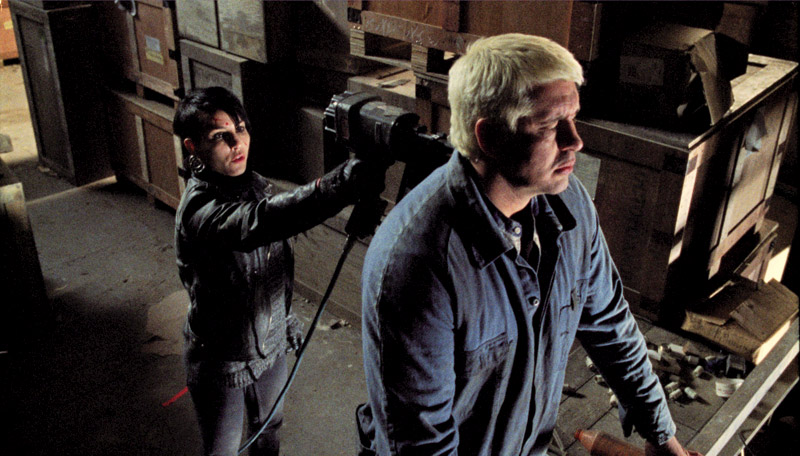
The Girl Who Kicked The Hornet’s Nest is probably the most apt film title I’ve seen in ages, because it describes exactly what Lisbeth does in this; actually, she kicks the hornets nest at the end of the previous film when she goes after Zalander, and this film merely examined the consequences of that act. As a resolution to a story, I’ve seen better, but then, I’ve not seen such a consistent narrative carried over three films since Lord Of the Rings and The Bourne Trilogy. This film, as with the two previous, is an excellent crime thriller, filled with intrigue and maneuvering by both the Good Guys and Bad. It’s well directed, if somewhat paced like a slow jog than a nice run, and the cast deliver the goods yet again. if you’re after a well constructed, intelligently written trilogy of films, then The Millennium Trilogy will be a godsend, because they really are great films. This one, the third, is almost incomprehensible unless you’ve seen the other two, so anybody going into this expecting to be able to figure out what’s going on from frame one will be disappointed – it’s a prerequisite that you’ve seen the first two films. The Girl Who Kicked The Hornet’s Nest is a terrific film, even for its negative elements.


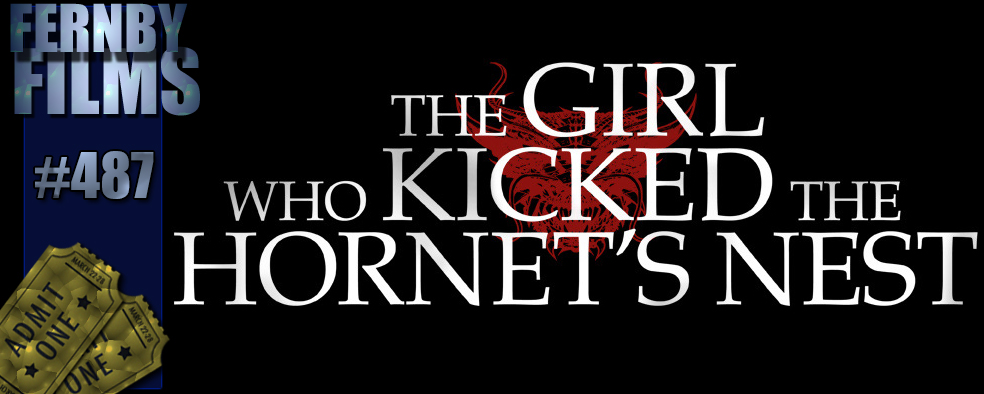


 The Girl Who Played With Fire on The Big Screen at The Strand Theater
The Girl Who Played With Fire on The Big Screen at The Strand Theater


Scott Lawlor Hey mate, have you seen these films yet?
I think this is my least favorite of the trilogy and that has to do with some pacing issues. For me this film was just too damn slow. Spot on about having to watch all three films in order to have any idea what hell is going on in this film. I am actually looking forward to seeing the remakes of the next two films in the trilogy. I acutally liked the Fincher version of the Girl with the Dragon Tattoo better than the original.
@3guys1movie Thanks, mate!! Yeah, the pacing on this film will test a large number of film fans, I know, but I'd rather this than a brisk, Run Lola Run style of film for what Larsson was trying to accomplish. I'll disagree with re Finchers remake, although I am looking forward to the next two to see how he goes….